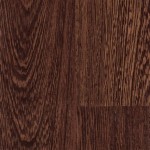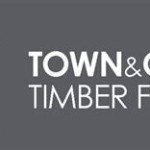Essential Aspects of Artificial Timber Flooring
Replacing traditional timber flooring with artificial alternatives has gained increasing popularity in recent years. Artificial timber flooring, often known as laminate flooring, offers several advantages that make it an attractive option for homeowners. Understanding the essential aspects of artificial timber flooring is crucial in making informed decisions during your flooring selection process.
Composition and Construction
Artificial timber flooring typically comprises multiple layers. The topmost layer is a photographic film that replicates the appearance of real timber. Beneath this layer is a high-density fiberboard called HDF, which provides stability and durability to the flooring. The bottommost layer is a backing sheet that prevents moisture from damaging the flooring.
Durability and Wear Resistance
Artificial timber flooring is renowned for its exceptional durability. The HDF core and protective top layer resist scratches, dents, and wear and tear. It is an ideal choice for high-traffic areas of your home, such as living rooms and hallways.
Water Resistance
Traditional timber flooring can be prone to moisture damage, especially in areas like bathrooms and kitchens. Artificial timber flooring, however, is water-resistant, making it suitable for these moisture-prone environments. The HDF core is treated with water-repellent chemicals, and the surface is sealed to prevent water penetration.
Easy Installation
Artificial timber flooring is relatively easy to install. It does not require glue or nails and can be clicked into place, making it a DIY-friendly flooring option. The interlocking system ensures a secure and stable installation, while the absence of adhesive reduces the need for extensive preparation.
Hygienic and Allergen-Free
Artificial timber flooring is hygienic and allergen-free. Its smooth, non-porous surface does not trap dirt or allergens, making it ideal for allergy sufferers. Regular cleaning with a vacuum cleaner is sufficient to maintain its cleanliness.
Environmental Considerations
Artificial timber flooring is an eco-friendly option as it is made from renewable materials. The manufacturing process is designed to reduce waste and conserve natural resources. Additionally, it does not emit harmful fumes, making it safe for indoor use.

The Best Fake Wood Flooring 4 Faux Floor Ideas Inc

Engineered Flooring Vs Laminate Everything You Need To Know Forbes Home

Laminate Flooring Types And S Forbes Home

Outdoor Artificial Wood Flooring Engineered Timber Wpc Decking S China Timbe Made In Com

Laminate Floor Guide Lowe S

The Best Fake Wood Flooring 4 Faux Floor Ideas Inc

8 Fake Wood Flooring Options 2024 A Full Guide And Reviews

2024 Laminate Flooring Trends 10 Stylish Ideas

8 Fake Wood Flooring Options 2024 A Full Guide And Reviews

Laminate Vs Hardwood Flooring Major Differences Forbes Home
Related Posts








